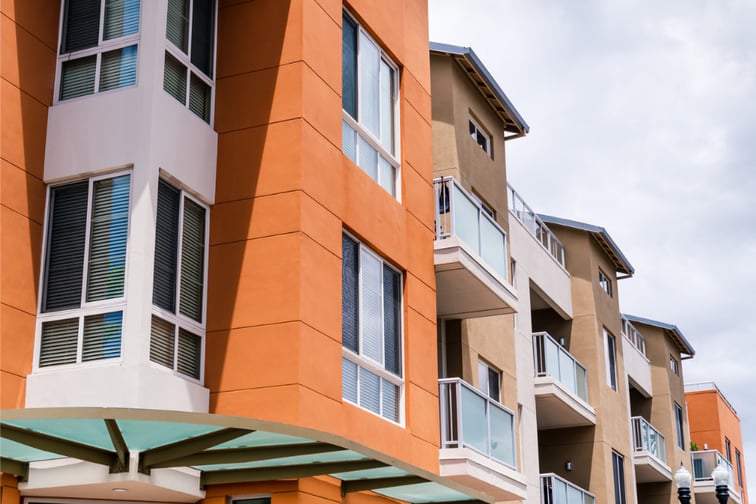

The Australian unit market has continued to trend downwards, with national unit values slipping -0.8% in October to a median value of $598,417 – that’s -3.8% below the peak recorded in April, according to a new CoreLogic report.
The change has also seen the annual growth trend for national unit values decline into negative territory for the first time in nearly three years, with unit values now -1.4% lower compared to the level recorded this time last year. By comparison, national house values slipped -1.3% over the month to $779,369 – that’s -6.6% below the April peak and -0.8% lower over the 12 months to October.
Kaytlin Ezzy, CoreLogic economist, said house values continue to be more sensitive to rising interest rates compared to units.
“As the larger monthly increases in house values recorded over the final quarter of last year fall out of the annual calculation, we'll likely see the annual growth trends intersect before the performance gap between house and unit values inverts in favour of units,” Ezzy said.
The quarterly pace of the decline has eased slightly across the combined capitals, with unit values slipping from a -2.7% decline in the September quarter to -2.4% over the three months to October.
“Several factors may have helped influence this deceleration,” Ezzy said. “Not least the smaller increases in the official cash rate between October and November, as well as a lacklustre spring selling season.”
On average, the flow of freshly advertised capital city unit listings spiked by roughly 37.1% each year between the end of winter and the spring peak in October. But due to weaker selling conditions and lower vendor confidence in 2022, the flow of fresh unit listings dropped by -3.6% over the same period, which in turn, has helped to keep total advertised supply below the previous five-year average, despite a slowdown in buyer demand.
Over the four weeks to Oct. 30, newly advertised unit listings across the combined capitals were down -14.6% compared to the previous five-year average, while total advertised supply was -8.1% below the average listings level for this time of year, indicating vendors were not dumping unit stock or rushing to exit the market, Ezzy said.
“There has been no material increase in the number of distressed unit listings, in fact, total listings have remained fairly flat, with many prospective sellers choosing to wait for more favourable market conditions rather than sell during a downturn,” she said.
Unit values across Adelaide and regional SA posted monthly increases of 1% and 0.9%, respectively, demonstrating resilience to current market conditions. Regional SA was the cheapest amongst the greater capitals and the rest of the regions, with median unit value at $239,856, while the average unit in Adelaide ($436,462) is more than $150,000 cheaper than Melbourne ($597,533) and nearly $350,000 cheaper than Sydney ($783,406), CoreLogic reported.
“The current downturn has been fairly orderly so far, with declines first emerging in the most expensive markets before flowing through to the broad middle and more affordable markets,” Ezzy said. “Given their relative affordability and below-average listing levels, it’s unsurprising that SA’s unit values are still increasing. However, the pace of growth across these markets has shown some signs of easing.”
Other affordable unit markets experienced relatively mild value falls over the three months to October, with Perth, Darwin, and Regional WA unit values down -0.1%, -0.5%, -0.9%, respectively. Brisbane recorded its first quarterly decline in two years, with unit values falling -1.2% over the same period.
“As the most affordable capital on the east coast, Brisbane's unit market had been more robust. However, six consecutive rate hikes, worsening affordability, and an easing in the South East Queensland migration trend have weakened demand,” Ezzy said.
Regional Queensland had a larger quarterly decline in unit values, down -2.9% compared to the Gold and Sunshine Coasts’ -2.9% and -6.0%, respectively.
Recording the strongest decline in unit values, meanwhile, were Regional Tasmania units, with the quarterly growth rate remaining steady at -7.8% for the second consecutive month. This was followed by units across Hobart (-4.2%) and Sydney (-3.3%), values eased -5.3% and -3.9%, respectively, over the three months to September.
Use the comment section below to tell us how you feel about the continuing decline in national unit values.
